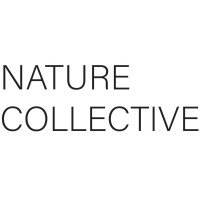
Growing homes
Growing nature
Join the Nature Pledge to ensure housing and commercial developments protect our remaining threatened species habitats
Our role is to provide Australians with liveable housing within thriving, resilient communities, through the maintenance or provision of accessible greenspace and nature.
Australia needs more housing; we can achieve this skillfully and sustainably. But without care and foresight, a program of major expansions in residential and commercial developments could cause long-term detriment to our lives and our country.
The long-term survival of the Critically Endangered Victorian grassland earless dragon is dependent on the conservation and restoration of our remaining grasslands.
Source: Nick Clemann (no reuse).

We aim to be at the forefront of the global nature positive movement and contemporary urban planning, and work towards maintaining the
market edge and social
license that nature positive approaches bring us.
We, the signatories, are committed to constructing housing and commercial developments in a manner that protects and restores threatened species habitats.
We will develop a mission statement and an action plan to take effect July 1, 2025 that sets out our commitment to sound, sustainable housing and commercial developments aligned to one of the following tiered commitment levels:
Tier 1 (Nature positive commitment)
Ecological due diligence assessments of sites being considered for development, completed prior to purchase, including on-ground surveys to identify remnant vegetation and threatened species habitat.
An absolute end to clearing of remnant vegetation and any habitat that supports threatened species by January 1, 2026, and the revision of current plans and developments to reduce impacts to nature wherever possible prior to January 1, 2026.
Taking opportunities to restore and regenerate degraded and fragmented nature by following sound and proven Biodiversity Sensitive Urban Design and Water Sensitive Urban Design principles.
Avoiding sourcing materials that impact areas of high conservation significance, including World Heritage areas, nationally and state legislated ecological communities and species, and regions with International Union for Conservation of Nature (IUCN) category I-IV protected status by 2026.
Tier 2 (Nature guardian commitment)
Ecological due diligence assessments of sites being considered for development, completed prior to purchase, including on-ground surveys to identify threatened species habitat.
An absolute end to clearing any habitat that supports threatened species by January 1, 2026, and the revision of current plans and developments to reduce impacts to nature wherever possible prior to January 1, 2026.
The endangered sunshine diuris orchid is one of many native grassland-dependent species that have suffered massive declines due to land clearing near urban areas. Only 1% of Melbourne’s grasslands now remain, making these last remnants critical to the survival of many native plant and animal species.
Source: Matt Tudor CC BY NC iNaturalist
Old ways of residential development came with considerable and sometimes irrevocable costs to nature.
The benefits of a nature positive approach are profound. By shaping how we imagine housing, we can ensure that a connection to nature is a centrepiece of planning, design and development.
From this, residents will benefit from a landscape that enriches them, bringing improvements in community wellbeing and a sense of a loved and valued place.
The regent honeyeater is a Critically Endangered species from south-eastern Australia, sometimes found in urban gardens. The conservation of large mature trees is essential to the survival of this species.
Source: Diana Shang CC-BY-NC iNaturalist
The Nightingale Anstey Development in Melbourne’s Brunswick was constructed on a site without remnant native vegetation and includes green spaces with native plants to enrich residents.

We’ve taken the pledge
Join our supporters
Resources
What is nature positive?
This is a way of living and doing business that includes, as a key objective, stopping and reversing nature loss so that by 2030, nature should be visibly and measurably recovering from 2020 baseline levels, with improved health, abundance, diversity, and resilience of species, populations, and ecosystems.
Source: Nature Positive Initiative
What is meant by habitat that supports threatened species?
This is habitat that supports the survival and continuation of vulnerable, endangered and critically endangered species (IUCN, 2012). This includes World Heritage areas, nationally and state legislated ecological communities and species, and regions with International Union for Conservation of Nature (IUCN) category I-IV.
What is remnant vegetation?
Remnant vegetation can be defined as those patches of native trees, shrubs and grasses that remain following significant fragmentation of a landscape. Remnant vegetation:
can be any shape or size.
can include all types of native vegetation communities, including forest, woodland, native grasslands, mallee, coastal heathland, or rainforest.
occurs on all land tenures, both privately and publicly owned.
Sources:
ACT Biodiversity Sensitive Urban Design Guide
Protecting Remnant Bush, National Parks and Wildlife Service NSW
The golden sun moth is a Vulnerable species dependent on native grassland and open grassy woodland habitat. Like many other species, it’s threatened by continued habitat loss, fragmentation and degradation.
Source: Leo CC2.0-BY-NC











